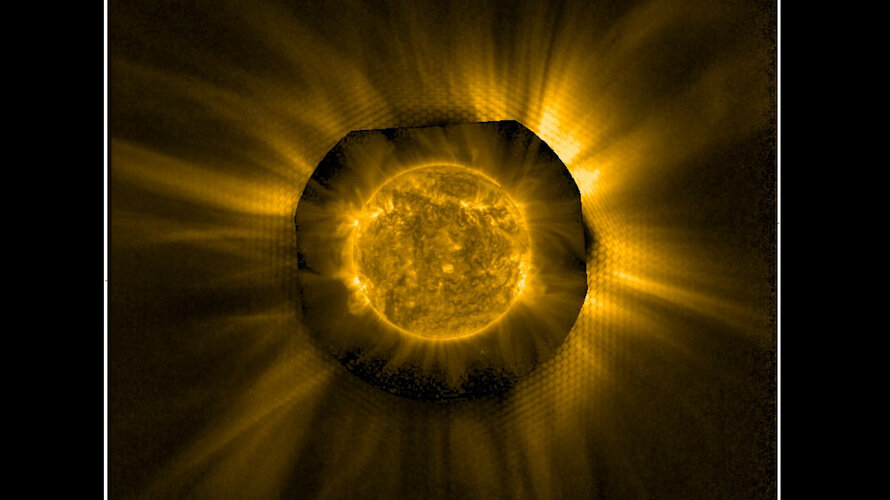

Access the video
The movie shows an ultraviolet image of the Sun’s corona taken using the EUI occulter. An ultraviolet image of the Sun’s disc has been superimposed in the middle, in the area left blank by the occulter. The image of the Sun’s disc has been taken by NASA’s STEREO mission, which happened to be looking at the Sun from almost the same direction as Solar Orbiter at the same time, so the features on the surface have a good correlation to the features in the corona.
In the past, images of the Sun’s corona have been taken with dedicated instruments called coronagraphs. For example, Solar Orbiter’s coronagraph is called Metis. The value of this new approach is that the coronagraph and the camera can be included in the same instrument.
“We’ve shown that this works so well that you can now consider a new type of instrument that can do both imaging of the Sun and the corona around it,” says Daniel Müller, ESA’s Project Scientist for Solar Orbiter.
Even before those new instruments, there is a lot of new science to come from EUI. The occulter mode makes it possible for scientists to see deeper into the Sun’s atmosphere. This is the region that lies beyond the field of view of classical EUV imagers but it is usually obscured by traditional coronagraphs. Now, however, EUI’s occulter can image this little-explored region easily.
“Physics is changing there, the magnetic structures are changing there, and we never really had a good look at it before. There must be some secrets in there that we can now find,” says David Berghmans, Royal Observatory of Belgium, and the EUI Principal Investigator.
Solar Orbiter is a space mission of international collaboration between ESA and NASA, operated by ESA.



